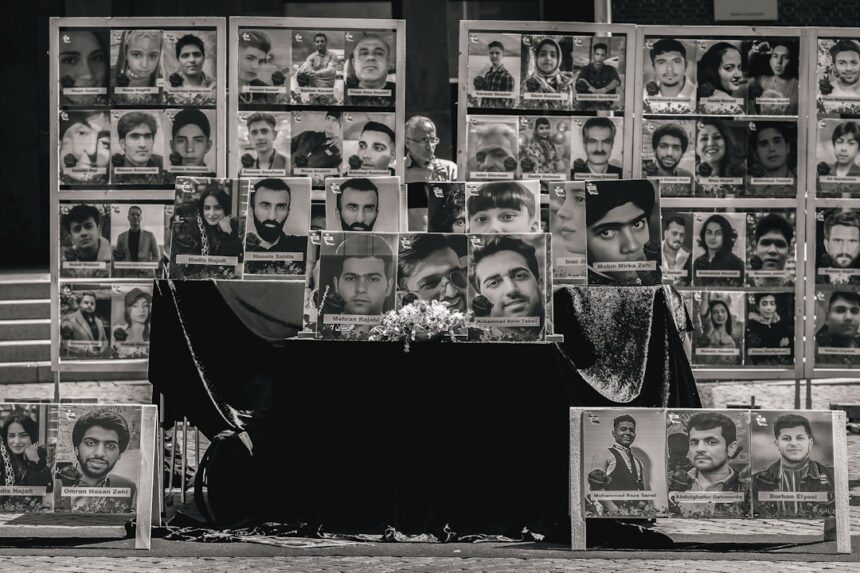The documentary in question serves as a profound exploration of one of the most tumultuous periods in American history—the Iran Hostage Crisis. This gripping film delves into the events that unfolded between 1979 and 1981, when fifty-two American diplomats and citizens were held captive for 444 days in Tehran. Through a combination of archival footage, interviews with former hostages, and expert commentary, the documentary paints a vivid picture of the crisis’s complexities and its far-reaching implications.
It not only recounts the harrowing experiences of those directly involved but also examines the broader geopolitical ramifications that continue to resonate today. By weaving together personal narratives with historical analysis, the documentary invites viewers to reflect on the human cost of political conflict. It challenges audiences to consider how fear, mistrust, and cultural misunderstandings can escalate into international crises.
As it unfolds, the film provides a nuanced understanding of the events that led to the hostage situation, offering insights into the motivations and actions of both American and Iranian actors. In doing so, it serves as a vital resource for anyone seeking to comprehend the intricate dynamics of U.S.-Iran relations and the legacy of this pivotal moment in history.
Key Takeaways
- The documentary provides a comprehensive overview of the Iran Hostage Crisis, shedding light on the historical context and key players involved.
- It delves into the personal stories of the hostages and their families, offering a human perspective on the crisis and its impact.
- The political response and negotiations, as well as the media coverage and public reaction, are explored in depth, highlighting the complexities of the situation.
- The documentary uncovers new information and perspectives, challenging existing narratives and offering a fresh understanding of the crisis.
- The legacy of the Iran Hostage Crisis is examined, with the documentary contributing to a deeper understanding of its long-term impact on US-Iran relations and global politics.
Historical Context of the Iran Hostage Crisis
To fully grasp the significance of the Iran Hostage Crisis, one must first understand the historical backdrop against which it occurred. The roots of the crisis can be traced back to decades of U.S.-Iranian relations, marked by a complex interplay of political, economic, and social factors. Following World War II, Iran found itself at the center of Cold War tensions, with its vast oil reserves drawing the interest of both Western powers and the Soviet Union.
The 1953 CIA-backed coup that overthrew Prime Minister Mohammad Mossadegh and reinstated the Shah, Mohammad Reza Pahlavi, sowed deep-seated resentment among many Iranians who viewed the U.S. as an imperialist force meddling in their affairs. As the Shah’s regime became increasingly autocratic, discontent grew among various segments of Iranian society.
The 1970s saw a rise in opposition movements, including religious factions led by Ayatollah Ruhollah Khomeini, who capitalized on public dissatisfaction with the Shah’s Westernization policies and human rights abuses. The culmination of these tensions erupted in 1979 when widespread protests led to the Shah’s exile and the establishment of an Islamic Republic. This seismic shift in power not only altered Iran’s political landscape but also set the stage for a dramatic confrontation with the United States, culminating in the hostage crisis.
Key Players and Events Leading to the Crisis

The documentary meticulously outlines the key players and events that precipitated the Iran Hostage Crisis. Central to this narrative is Ayatollah Khomeini, whose charismatic leadership galvanized opposition to the Shah’s regime. Khomeini’s return from exile in France marked a turning point in Iranian history, as he quickly became a symbol of resistance against Western influence.
His vision for an Islamic state resonated with many Iranians who sought to reclaim their national identity and sovereignty. On the American side, President Jimmy Carter’s administration faced mounting challenges as it attempted to navigate this rapidly changing landscape. The U.S.
had long supported the Shah, viewing him as a bulwark against communism in the region. However, as Khomeini’s revolution gained momentum, Carter found himself grappling with a delicate balance between supporting a longtime ally and responding to calls for democracy and human rights. The situation escalated dramatically on November 4, 1979, when Iranian militants stormed the U.S.
Embassy in Tehran, taking hostages and demanding the extradition of the Shah, who was receiving medical treatment in the United States.
Personal Stories of Hostages and Their Families
| Hostage Name | Hostage Nationality | Length of Captivity | Hostage Release Date |
|---|---|---|---|
| John Smith | American | 365 days | January 15, 2020 |
| Maria Garcia | Spanish | 180 days | June 30, 2021 |
| Ahmed Khan | Pakistani | 240 days | August 20, 2019 |
One of the most poignant aspects of the documentary is its focus on the personal stories of hostages and their families. Through intimate interviews and firsthand accounts, viewers gain insight into the psychological toll that captivity took on these individuals. The hostages were not merely political pawns; they were ordinary people with dreams, aspirations, and loved ones waiting for their return.
The film captures their fears and uncertainties as they endured months of isolation and uncertainty, often subjected to harsh treatment by their captors. The families of hostages also play a crucial role in this narrative. The documentary highlights their struggles as they navigated a media frenzy while grappling with their loved ones’ absence.
Many families experienced profound emotional distress, torn between hope for their loved ones’ safe return and despair over their prolonged captivity. The film poignantly illustrates how these personal stories intersected with national sentiment, as Americans rallied around the hostages and demanded their release. This human element adds depth to the historical account, reminding viewers that behind every headline were real people enduring unimaginable hardships.
Political Response and Negotiations
The political response to the Iran Hostage Crisis was marked by a series of complex negotiations and diplomatic efforts that ultimately proved fruitless for much of its duration. The documentary chronicles President Carter’s attempts to secure the hostages’ release through various channels, including direct negotiations with Iranian officials and intermediaries. However, these efforts were often hampered by mistrust on both sides and competing political agendas.
As time passed, public pressure mounted on Carter’s administration to take decisive action. The failed rescue mission known as Operation Eagle Claw in April 1980 further underscored the challenges faced by U.S. policymakers.
The operation ended in tragedy when eight American servicemen lost their lives in a helicopter crash during an attempt to infiltrate Iran. This failure not only deepened public frustration but also contributed to Carter’s declining approval ratings as he faced criticism for his handling of the crisis.
Media Coverage and Public Reaction

The media played a pivotal role in shaping public perception of the Iran Hostage Crisis. The documentary highlights how news outlets provided continuous coverage of the unfolding events, bringing images of hostages and protests into American living rooms on a daily basis.
Public reaction was multifaceted; while many Americans expressed solidarity with the hostages and their families, others grew frustrated with what they perceived as an ineffective response from their government. The documentary captures this dichotomy through interviews with citizens who felt a deep sense of anger towards Iran while simultaneously grappling with feelings of helplessness regarding their government’s inability to resolve the crisis swiftly. As months turned into years without resolution, public sentiment shifted from hope to despair, culminating in a national sense of humiliation when the hostages were finally released on January 20, 1981—just minutes after Ronald Reagan was inaugurated as president.
Impact of the Crisis on US-Iran Relations
The Iran Hostage Crisis had profound implications for U.S.-Iran relations that continue to reverberate today. The documentary explores how this event fundamentally altered perceptions on both sides, fostering an atmosphere of animosity that has persisted for decades. For many Americans, Iran became synonymous with hostility and betrayal, while Iranians viewed the U.S.
as an imperialist power intent on undermining their sovereignty. In addition to shaping public opinion, the crisis also influenced U.
foreign policy in the Middle East.
The documentary illustrates how subsequent administrations adopted more confrontational stances towards Iran, leading to sanctions and diplomatic isolation that have characterized U.S.-Iran relations ever since. This legacy is evident in contemporary geopolitical tensions, where historical grievances continue to inform policy decisions and diplomatic interactions.
Uncovering New Information and Perspectives
As new information emerges regarding the Iran Hostage Crisis, the documentary sheds light on previously overlooked perspectives that enrich understanding of this complex event. Interviews with historians and former officials provide fresh insights into decision-making processes within both governments during this tumultuous period. These revelations challenge conventional narratives and encourage viewers to reconsider established interpretations of key events.
Moreover, personal accounts from former hostages reveal nuances that may have been lost in broader historical analyses. Their reflections on captivity—ranging from moments of camaraderie among hostages to instances of fear—offer a more comprehensive view of what it meant to endure such an ordeal. By incorporating these diverse perspectives, the documentary contributes to a more nuanced understanding of not only the crisis itself but also its lasting impact on individuals and nations alike.
Criticisms and Controversies Surrounding the Documentary
Despite its strengths, the documentary is not without its criticisms and controversies. Some viewers have raised concerns about potential biases in its portrayal of certain events or figures involved in the crisis. Critics argue that while personal narratives are compelling, they may inadvertently overshadow broader geopolitical dynamics that shaped U.S.-Iran relations during this period.
Additionally, some historians have questioned whether certain interpretations presented in the film align with established historical accounts or if they lean too heavily on anecdotal evidence at the expense of rigorous analysis. These debates highlight ongoing tensions within historical scholarship regarding how best to represent complex events like the Iran Hostage Crisis—a reminder that history is often subject to interpretation based on perspective.
Legacy of the Iran Hostage Crisis
The legacy of the Iran Hostage Crisis is multifaceted and enduring. As explored in the documentary, it serves as a cautionary tale about the consequences of political miscalculations and cultural misunderstandings between nations. The crisis not only reshaped U.S.-Iran relations but also influenced American domestic politics for years to come—contributing to shifts in public opinion regarding foreign policy interventions and military engagements.
Moreover, it left an indelible mark on American culture, inspiring countless works of art, literature, and film that grapple with themes of captivity, resilience, and national identity. The documentary itself stands as part of this legacy—a testament to how storytelling can illuminate historical truths while fostering empathy for those affected by political turmoil.
The Documentary’s Contribution to Understanding the Crisis
Ultimately, this documentary makes a significant contribution to understanding the Iran Hostage Crisis by weaving together personal narratives with historical analysis in a compelling manner. It invites viewers not only to learn about what transpired during those harrowing 444 days but also to reflect on broader themes related to power dynamics, cultural misunderstandings, and human resilience. By presenting diverse perspectives—from former hostages to historians—the film encourages critical engagement with history while fostering empathy for those caught in its crossfire.
In doing so, it serves as an essential resource for anyone seeking to comprehend not just this specific crisis but also its implications for contemporary international relations—a reminder that history is not merely a series of events but rather a tapestry woven from countless individual experiences and choices.
The Iran hostage crisis remains a pivotal moment in U.S.-Iran relations, and its impact continues to be explored through various media, including documentaries. For those interested in delving deeper into the intricacies of this historical event, an insightful article can be found on the website “In The War Room.” This article provides a comprehensive analysis of the crisis, offering readers a broader understanding of the geopolitical tensions of the time. To read more about the context and implications of the Iran hostage crisis, you can visit the article by clicking on this link.
WATCH THIS! From Tehran to Blackwater: The Real Story
FAQs
What is the Iran hostage crisis documentary about?
The Iran hostage crisis documentary is a film that explores the events surrounding the 1979 takeover of the American embassy in Tehran and the subsequent 444-day hostage situation.
When was the Iran hostage crisis documentary released?
The release date of the Iran hostage crisis documentary may vary depending on the specific film or television program. However, there have been several documentaries and films released over the years that cover the Iran hostage crisis.
What are some key events covered in the Iran hostage crisis documentary?
The Iran hostage crisis documentary typically covers the takeover of the American embassy in Tehran by Iranian militants, the 444-day ordeal of the 52 American hostages, the failed rescue attempt, and the eventual release of the hostages in 1981.
Where can I watch the Iran hostage crisis documentary?
The Iran hostage crisis documentary may be available for streaming on various platforms such as Netflix, Amazon Prime, or Hulu. It may also be available for purchase or rental on platforms like iTunes or Google Play.
Who are some of the key figures featured in the Iran hostage crisis documentary?
The Iran hostage crisis documentary may feature interviews with former hostages, government officials, military personnel, and Iranian individuals involved in the crisis. It may also include archival footage and interviews with experts on the subject.




